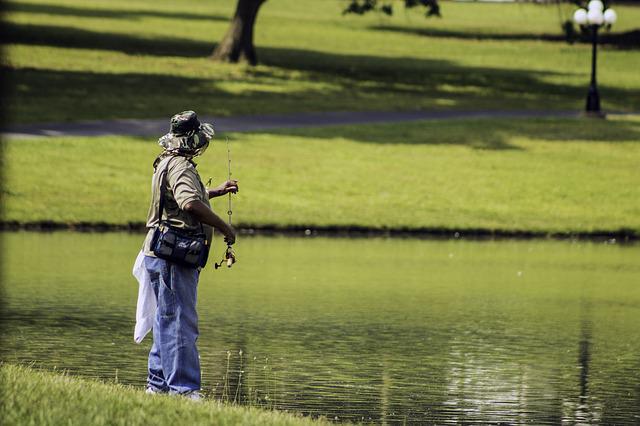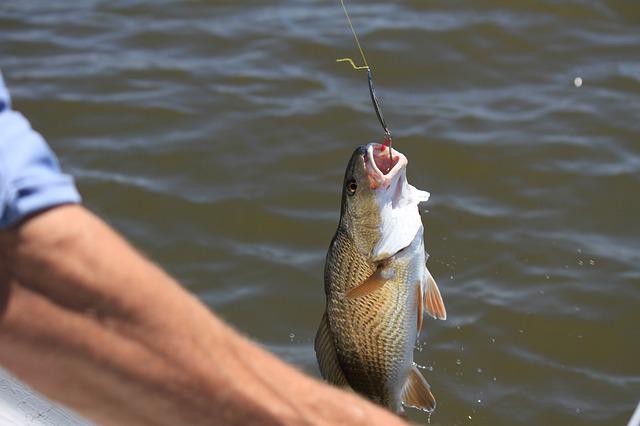Knowing how to string up a new fishing pole is crucial when you purchase one. Whether or not it’s your first fishing pole, it’s important to learn this fundamental skill.
Before you start fishing, it’s a good idea to read up on how to string a fishing pole because if you get it wrong—like I did when I first started—using your fishing pole will be much more difficult than it needs to be.
You’ll wind up in a world of tangles, bad casting, and lost fish—not what a fisherman needs when trying to catch fish.
Join me as I walk you through the steps of correctly how to string a fishing pole so you can get out on the water and enjoy your fishing trip.
Table of Contents
Needed Things To String Your Fishing Pole
Let’s first look at all the materials you’ll need to string a fishing pole properly before we begin with the actual instruction.
Before you start, make sure you have everything ready.
- A fishing rod
- A hook or all-purpose lure
- Scissors or a knife
- Electrical tape (braid only)
- A fishing reel
- Some fishing line (backing and fly line for a fly reel and rod)
You’re ready to go if you’ve got all of these little pieces and pieces ready.
You’ll see that I added a few sections in brackets that refer to various fishing line, rod, and reel types; we’ll talk more about this later.
Let’s first examine how to string your rod using the most common tools, a spinning rod, and a spinning reel.
How To String A Fishing Pole?
Assembling Pole
The joints that most basic rods have where they separate are referred to as ferrules. To align the guides (those tiny metal loops along the rod), bring the ferrules together at a 45-degree angle, then push and twist.
The reel foot (the flat metal base) should then be hooked into the reel seat, which is located in the middle of the handle, to secure the reel to the rod.
Attaching The Line
Before loading your line, open the bail (the small wire arm that lifts up and down on your reel; up is open).
Use an arbor knot, which is based on a noose knot, to secure your line to the “arbor” (center of the spool). A loose knot should be tied around the standing line after wrapping the line’s free end, or tag, around the arbor. Next, tie a second loose knot on the tag end. Hold the tag end against the knots and pull firmly until the knots are securely fastened.
Spooling The Spinning Reel

Place the spool flat on the ground, not on its side. Make sure the line loads onto the reel facing the same way it exits the spool.
Apply some pressure to the line with your thumb and index finger; this should help to prevent twists. Continue maintaining pressure on the line as you turn the handle 15 to 20 times.
Give the line a little slack and stop to look for twists. Flip the spool over and try again if it twists. Choose the side that twists the least.
Fill the spool up to about an eighth of an inch from the rim by continuing to load it.
Attaching The Line To The Hook
The clinch knot, also known as the fisherman’s knot, is the most popular way to attach a fishing line to a hook.
The steps for tying a fisherman’s knot are as follows:
- Wrap the line’s tag end five to seven times around its standing end after passing the line’s end through the eye of the hook.
- The tag end should be threaded through the loop that is closest to the hook eye and then through the big loop you just made again.
- Once the knot is tight, pull firmly on both ends of the line.
- Trim the tag end.
Fishing Tips & Common Mistakes To Avoid
- Take your time and don’t rush
- Go to a fishing shop and use the reel filling station if you’re unsure
- Do not overfill your reel or you will get tangles
- Make sure the line is tight on the reel – check by pushing it, if it’s soft, do it again
Conclusion
You’ve just invested in a new fishing rod and reel; all that’s left to do is figure out how to string or line a fishing pole. Check your fishing rod’s line rating before you start fishing to make sure your line matches the suggested weight range. For instance, you should use a 6 to 10-pound test line if the line rating on the rod is “6-10 lb.”
The process of adding a line to a fishing reel and pole won’t take you very long; all you need to do is follow a few straightforward steps.


